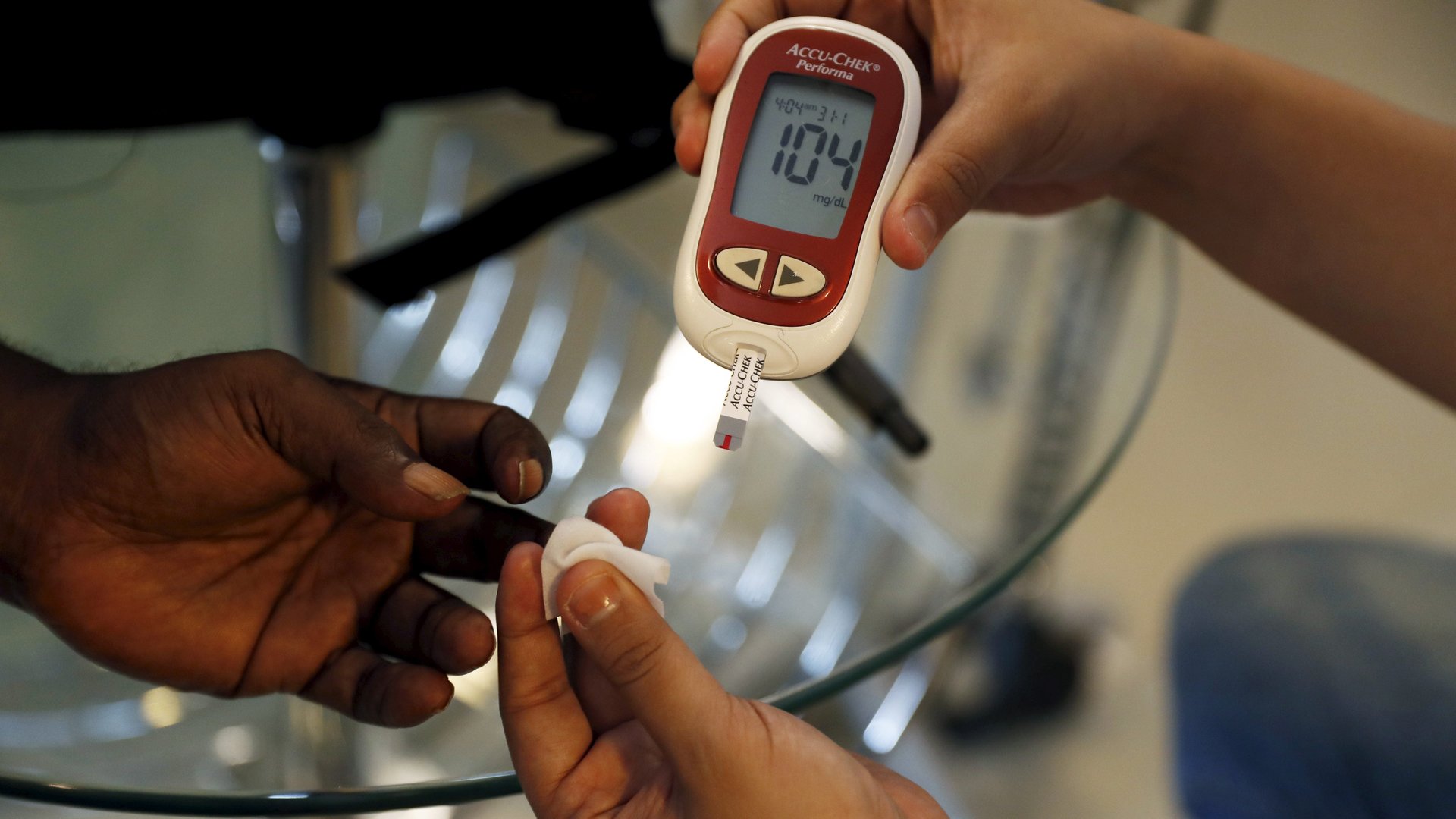Nearly one in five Covid-19 deaths in Africa are linked to the rise of diabetes
Over the last decade there has been growing concern that so much of the way health systems are structured across Africa is set up to handle communicable diseases like malaria. But as the sub Saharan Africa region in particular has seen a growing middle class it has also seen a rise in noncommunicable diseases including heart disease, blood pressure, renal failure, and especially diabetes, which has been growing at an alarming rate.


Over the last decade there has been growing concern that so much of the way health systems are structured across Africa is set up to handle communicable diseases like malaria. But as the sub Saharan Africa region in particular has seen a growing middle class it has also seen a rise in noncommunicable diseases including heart disease, blood pressure, renal failure, and especially diabetes, which has been growing at an alarming rate.
The World Health Organization now says 18.3%—or nearly one in five—Covid-19 deaths in Africa were found to be among people with diabetes in an analysis of 14 African countries. So far about 46,626 deaths have been recorded in Africa, a number that is much lower in both absolute and per capita terms than those of Europe and the Americas.
It has been well-reported in various health studies that people living with diabetes have higher chances of dying if infected with the SARS-CoV-2 virus. One report has suggested the risk of death is more than two-times higher than with non-diabetic patients. A whole-population study in England showed a third of Covid-19 related deaths occurred in people with diabetes:
While Africa’s incidence rates of people with diabetes remains relatively low, the trend of diabetes in sub Saharan Africa has been a source of concern as the disease burden is escalating.
Last year even though just 19 million people of the 436 million globally who live with diabetes are in sub Saharan Africa, about 60% of them were unaware of their condition—the highest of all regions. But the number of people with diabetes is expected to increase by 48% in 2030 and by 143% in 2045. The economic burden of diabetes in the region was estimated at $9.5 billion in 2019 and is expected to increase to $17.4 billion by 2045.
Despite this worrying trend, only about a third of 41 countries in the region offered fully functional health services for diabetic patients during the onset and peak of the pandemic. As the world marked this year’s diabetes day on Nov. 14, WHO called for investment in early detection, prevention, and treatment of diabetes in Africa.
A person develops diabetes when his or her body either doesn’t produce insulin or doesn’t use the amount it produces properly. Insulin is a hormone that controls glucose levels in the bloodstream. When all is well, it can maintain glucose levels at the right amounts. When the system is failing, either because the pancreatic cells that produce insulin, called beta cells, are under attack from antibodies, or because cells have become insulin-resistant, the patient is at risk of developing diabetes.
Traditionally there have been two main types of diabetes though scientists have in recent years considered classifying them as five types. Living with the condition can lead to blindness, kidney failure, or lower limb amputation, all while increasing the likelihood of heart attack or stroke.
The increase in the prevalence of diabetes in sub Saharan Africa has been linked to rising incomes, urbanization, and changing work and eating habits in the region. This means as more African countries continue to emerge from low income to high-income economies there may likewise be an increased prevalence of diabetes in the continent.
WHO Africa’s deputy incident manager for emergency response, Dr. Richard Mihigo, says it goes beyond diabetes as there has been a rise in cases of noncommunicable diseases across the board.
“It really a trend that is becoming alarming and for which WHO has called member states to rise and set up robust programs and prevention to make sure as life expectancy is increasing and as the lifestyle is changing people need to avoid some of these risk factors that could expose the population to get sick and develop these communicable diseases,” says Mihigo.
Sign up to the Quartz Africa Weekly Brief here for news and analysis on African business, tech, and innovation in your inbox